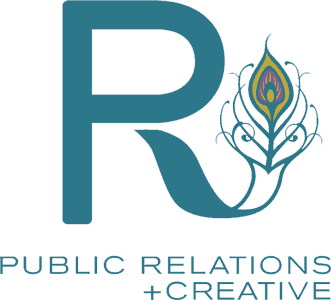In today’s rapidly evolving digital landscape, effective media communication is not just a skill but a necessity for individuals and organizations. Whether you’re a business leader, public relations specialist, or an entrepreneur, mastering media interactions can significantly enhance your brand’s reputation and reach. Media training is designed to teach business executives, public relations teams, and other key members of your organization the tools and strategies they need to ensure that any interactions they have with the media result in positive media coverage for the company.

Here are five essential media training tips from the pros to help you navigate interviews, press conferences, and public speaking engagements with confidence and poise.
1. Understand Your Audience
One of the fundamental principles of media training is to know your audience. Before engaging with the media, it’s essential to research and understand who you are speaking to. This knowledge helps tailor your message to resonate with the audience’s values, interests, and concerns.
Why it Matters: Tailoring your message to your audience’s values, interests, and concerns can make your communication more impactful and engaging. Whether you’re addressing potential customers, stakeholders, or the general public, aligning your communication with their interests can enhance engagement and effectiveness.
Pro Tip: Develop audience personas and prepare key messages for each group. This strategy allows you to shift your communication style and content seamlessly to meet the needs of different audiences.
2. Craft Clear and Concise Messages
Clarity and brevity are paramount in media communication. The best media professionals excel at delivering messages that are both clear and concise, avoiding jargon and overly complex language. This approach helps ensure that your key points are understood and remembered.
Why it Matters: In a media landscape with short attention spans, concise messaging helps maintain the audience’s focus and prevents misinterpretation. It also makes it easier for journalists to quote you accurately.
Pro Tip: Use the “rule of three” to structure your messages. Break down your main points into three clear, easily digestible segments. This technique aids in retention and provides a simple framework for your audience.
3. Practice Active Listening
Active listening is a crucial skill during media interactions. It involves fully concentrating, understanding, and responding thoughtfully to questions or comments. Active listening ensures that you address the interviewer’s questions directly and provides an opportunity to clarify any misunderstandings in real-time.
Why it Matters: Active listening helps build rapport with journalists and audiences. It demonstrates respect and attentiveness, which can lead to more productive and positive interactions.
Pro Tip: During interviews, maintain eye contact and nod occasionally to show you are engaged. Pause briefly before responding to ensure you fully understand the question and to give yourself time to formulate a thoughtful response.

4. Manage Your Non-Verbal Communication
Your body language, facial expressions, and tone of voice play a significant role in how your message is received. Non-verbal cues can reinforce or undermine your message, depending on how well they align with your verbal communication.
Why it Matters: Consistent and positive non-verbal communication builds trust and credibility. It helps convey confidence and sincerity, which are critical for maintaining audience engagement and trust.
Pro Tip: Practice in front of a mirror or record yourself to become aware of your non-verbal habits. Pay attention to your posture, gestures, and facial expressions. Aim for open and confident body language, such as standing or sitting up straight, making appropriate eye contact, and using hand gestures to emphasize points.
5. Use Media Training to Prepare for Tough Questions
Media interactions often include challenging or unexpected questions. Being prepared to handle these effectively can make a significant difference in maintaining control of the narrative and protecting your reputation.
Why it Matters: Handling tough questions with grace and confidence prevents you from being caught off guard and helps maintain credibility. It also demonstrates transparency and honesty, which are valued by both the media and the public.
Pro Tip: Anticipate potentially tough questions and prepare thoughtful, concise responses. Practice these responses through mock interviews with colleagues or a media training professional. This preparation helps you stay calm and composed during actual interviews.
Bonus Tips for Effective Media Training
Emily Reynolds Bergh, the founder of R Public Relations, is a public relations pro with over 15 years of experience delivering personalized, top-caliber PR services. Bergh explains, “Effective media training is invaluable for individuals and organizations who want to level up their public relations toolkit, so you can confidently navigate interviews, convey key messages, and build a positive public image.”
Here are a few additional media training pointers from Bergh:
- Stay On Message: Regardless of the direction of the interview, always steer the conversation back to your key points. Use bridging phrases like, “What’s important to remember is…” to redirect focus.
- Control the Pace: Speak at a moderate pace to ensure clarity and allow the audience to absorb your message. Avoid speaking too quickly, as it can lead to misunderstandings and give the impression of nervousness.
- Know Your Platform: Different media platforms require different approaches. Adapt your style for television, radio, print, or online interviews. For example, television interviews often require more concise and visually engaging responses, while print interviews allow for more in-depth explanations.
Mastering media training involves understanding your audience, crafting clear messages, practicing active listening, and preparing for tough questions. These skills, when honed, can significantly enhance your ability to communicate effectively with the media, thereby boosting your brand’s image and influence. By following these tips from the pros, you’ll be well-equipped to handle any media interaction with confidence and professionalism.
Media training is not a one-time effort but a continuous process of learning and adapting. As the media landscape evolves, staying updated with the latest trends and techniques will not only ensure you remain an effective and impactful communicator but also keep you motivated and eager to improve.
